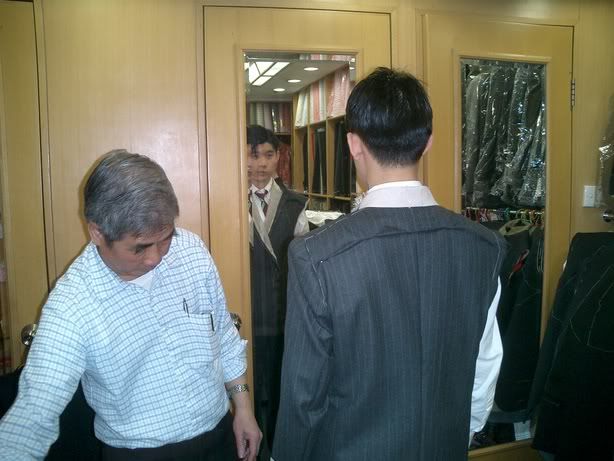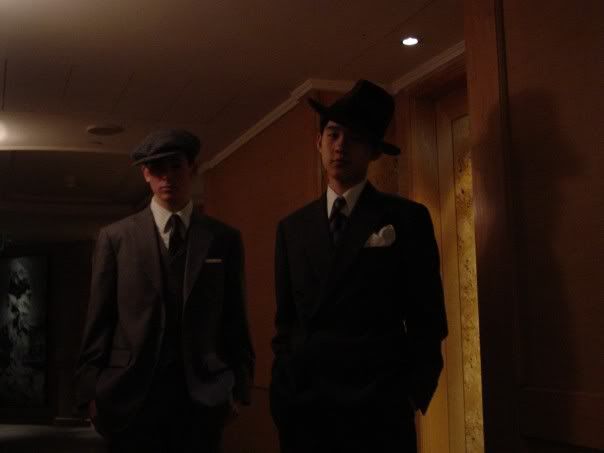I believe I am one of the younger members of this forum, if not the youngest, at 16 years old.
So firstly, I'd like to introduce myself a little. My name is Raymond (Ray), and I am currently living in Taipei, Taiwan. I've been interested in elegance in dress since I had discovered the "Fedora Lounge". Experimenting with chepe (in price) but good-quality vintage clothing, I have been able to see what works and what doesn't work.
In my collection right now, I have a 30's dark navy blue pinstriped 3 piece suit, a 60's gray tweedy 3-piece suit, an early 50's blue flannel DB jacket, and a 40's Hart Schaffner Marx teal-ish DB jacket.
After having my eyes opened to things like lapel gorge and wdith, button stance, pants rises, and fedoras, naturally my feet were inkling for a chance for bespoke. Well over winter holiday, I paid a visit to Hong Kong for my first bespoke suiting. My godfather there has a very good tailor, but at my age, spending $2000USD for a suit was a little out of my league, so I went to find a different renowned tailor. I discovered Sam's tailor near the Peninsula Hotel, who is known for a slew of famous clientele.
I wanted to try a double breasted suit, inspired by one of Humphrey Bogart's suits. I have 2 3-piece suits already, and I needed a bit of variety in my wardrobe.
The first thing I asked about was fabric weight. Being used to vintage, dense fabrics, these modern fabrics were a different breed. I found a nice 13 oz. gray thick pinstripe/chalkstripe in a wool/cashmere blend, but I was struck by how flimsy it was. I was looking for something with more body, and the lady helping me find fabric kindly said it was the heaviest fabric they had. "Oh, well. I guess there's plenty more times to find better fabric."
I was more concerned about fit anyway. It's probably better to figure out kinks at my age than when I'm in college and fending for myself.
So I had my measurements at 3:30 PM and had a first fiting at 7:00PM that evening.

I printed out some photos during that break to show further what specifics I wanted, espeically in the rise of the pants and button stance of the jacket. Something I had noticed about Hong Kong DB jackets is that they like their buttons close together. I had to fight the tailor to make them 1/2" wider in stance.
More to come- 2nd fitting and the final product!
Ray
P.S. Can someone clear up what the difference is in chalkstripe and pinstripe in closeup?




